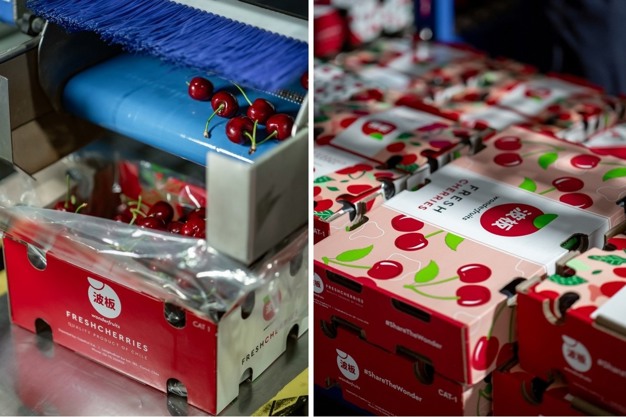The Chilean cherry has established itself as a star product in international markets, especially in Asia and Latin America, where demand continues to rise. Despite its exponential growth, the sector faces significant quality, logistics, and sustainability challenges.
Adverse weather conditions at the beginning of the harvests marked last season, affecting the quality of the earliest varieties. However, mid- and late-season varieties delivered promising results, contributing to the overall success of the season. This year's projections are optimistic thanks to favorable weather conditions that have allowed optimal fruit development in the orchards.

The country will export around 36,000 tons of cherries, equivalent to 2,000 containers, and the Royal Dawn, Santina, Lapins, Bing, Kordia, Regina, and Sweetheart varieties are expected to stand out. This volume reflects the sector's growth and the efforts to maintain high-quality standards. "Maintaining consistency and quality becomes more challenging as volumes increase and varieties exhibit different behaviors," stated Sebastian García, category manager of Copefrut.
Garcia emphasized that "the industry has experienced an evolution in prices, which have remained within a stable range despite the increase in volumes. However, rising freight rates and extreme weather events such as frost, rain, and floods represent important hurdles. It is important to plan properly to mitigate these impacts and ensure compliance with commitments to international markets."

Regarding sustainability, Copefrut has implemented changes in packaging and transport, eliminating non-recyclable inks and optimizing packaging formats to improve container efficiency. In addition, incorporating advanced technologies has increased its processing capacity, reaching up to 37,000 kg/h. "The new infrastructure marks a before and after in our operational capacity," García said.

Looking to the future, Chilean cherries seek to diversify markets and adapt to global demands through varietal innovations that respond to agronomic, legal, economic, and commercial criteria.
For more information:
Sebastián García, category manager
Copefrut
Chile
Email: [email protected]
www.copefrut.com
